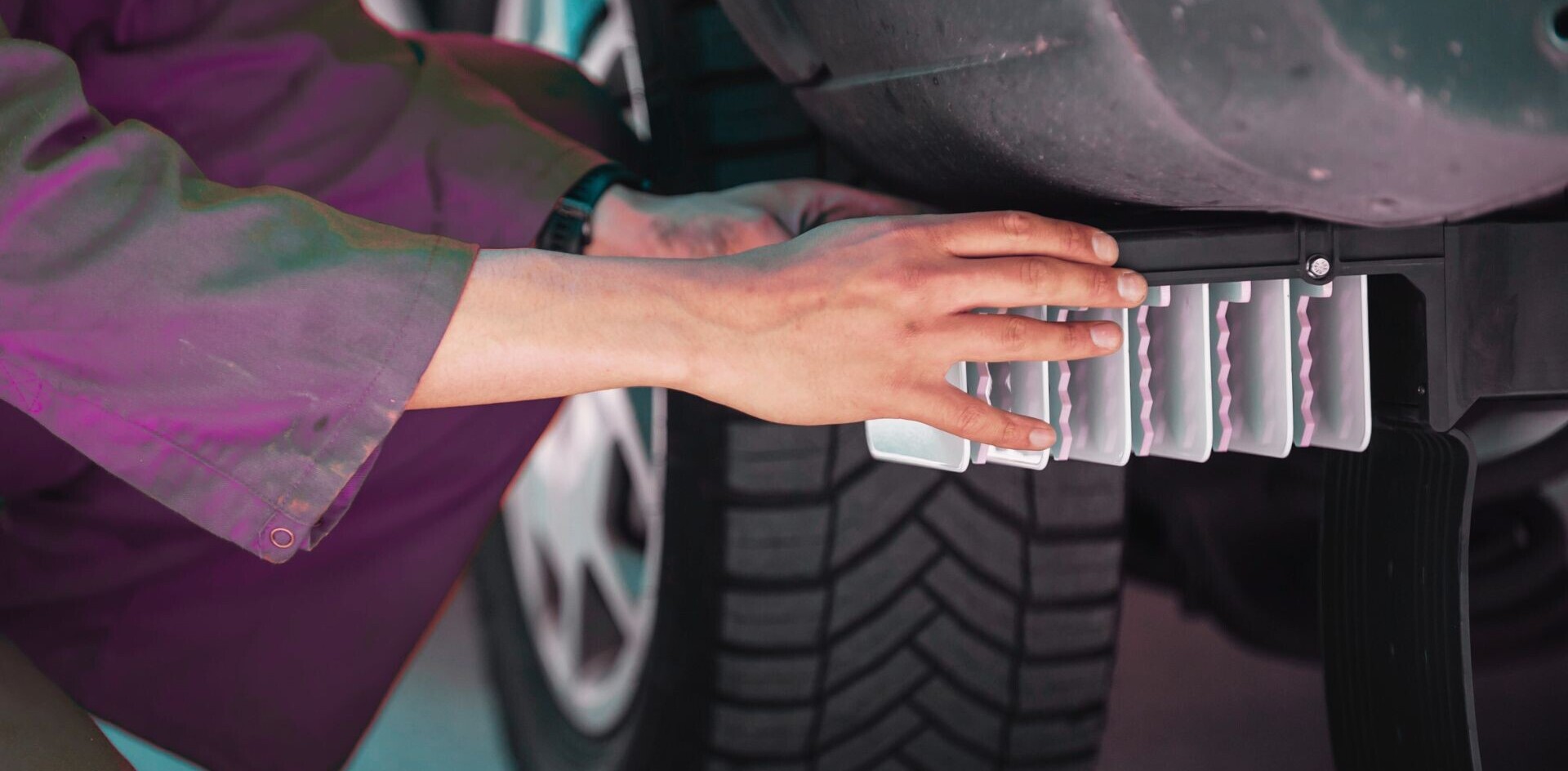
No longer the preserve of technocrats, electric vehicles have taken the spotlight as the eco-friendly automobiles of choice. With growing concern for the planet, unpredictable fuel shortages, and changing commuting habits, more people are turning towards EVs instead of traditional gas guzzlers.
It’s well known that EVs can lower emissions, especially when they’re charged with green energy. Much of their popularity stems from the desire to make driving more environmentally friendly, but that’s only one part of an EV’s carbon footprint. The process of manufacturing an electric car often produces more emissions than traditional fuel-powered vehicles (although EVs don’t produce emissions while being driven, which makes up for this discrepancy).
One factor that’s often overlooked is the production of the thousands of individual parts that go into one vehicle. While up until now the focus has been on building cleaner engines, it’s time to take a deeper look at the environmental cost of our cars, from the premium leather upholstery down to the plastic cup holders. In the race to build a truly carbon 0 vehicle, automakers are now experimenting with some new materials which could become staples in the cars of the future.
But, while innovation in green car features is growing, the difficulty will be in shifting the mindset of consumers.
Here are five materials that could lead to more eco-friendly cars:
Vegan vehicles lead the way
Once upon a time, plush leather interiors were the hallmark of a classy ride. Not anymore. Instead, the new marker of a premium vehicle is vegan leather. Made from non-animal sources, these luxurious materials give a similar aesthetic, without sacrificing any cows. The result? Cozy interiors without the environmental cost of farming cattle and producing toxic greenhouse gasses in the process.
Changing consumer attitudes to sustainability are partially the cause of this trend, as people reexamine their lives and identify ways to become more environmentally conscious. Likewise, the move towards vegan leather is a style statement that complements the ethos of going electric.
Speaking to The Next Web, Polestar’s Head of Sustainability, Fredrika Klarén, says Polestar is mindful about how it incorporates materials into its EV.
Materials are at the heart of our sustainability work. That’s where the environmental and social impact comes from — the use and the processing of materials.
The automotive brand is determined to include more sustainable materials in its vehicle design, pledging to completely stop using animal-derived leather in its cars by 2025. By merging style and sustainability, car designers can show that cruelty-free motoring is an option for drivers worldwide.
Cork: classy and conscious
It’s not just animal-derived materials getting an in-vehicle makeover. Cork material — yes, the same you find in a wine bottle — is fast becoming a chosen material in green EVs. Some manufacturers used cork pre-WW2 due to a lack of plastic availability.
Almost a century later, the material is being featured as an option to accentuate the vehicle’s design, without resorting to using less sustainable options like wood or plastic for door panels or the car’s central console. Cork accents can also feature on gearboxes and armrests, giving vehicles a stylishly rugged feel, inspired by the outdoors and camping aesthetics.
The future is bio-based materials
Carmakers are also finding inspiration in nature including more biologically derived materials in their models. Automotive designers are transforming cellulose fibres found in plants into upholstery materials like cushions and seats. These plant-based alternatives are replacing traditional polyurethane foam, while providing improved comfort — a win-win for the planet and passengers.
And that’s not all. Some brands are really going outside the box in their search for new materials.
For instance, some automakers are adopting sustainably-sourced flax to strengthen car bumpers.
Others are taking to the seas for their latest vehicle materials. Recently, automotive companies have started using a material called chitin which is biodegradable and derived from crustacean shells (think lobsters and crabs).
Even foodie favorites like coffee and tomatoes are making their way into the new generation of EVs. Automakers are transforming tomato skins into suspension bushing and car hoses. Some are repurposing coffee chaff to create energy efficient headlamps that are lightweight and durable.
Fossil-free steel steers new cars forward
We can’t get away from using steel in car designs, but we can find new and more eco-friendly ways to produce it. Volvo recently came out with a vehicle that’s made with fossil free steel. Instead of fire powered coal, the company used electrolysis based green hydrogen to produce the steel.
Given that steel comprises up to 60% of body structures in modern vehicles, this carbon-neutral development could radically lower the environmental footprint of the automotive industry.
Alongside steelmaking’s eco-friendly makeover, researchers are exploring the viability of cellulose fibers as an alternative to steel. Being one-fifth of the weight, but five times stronger, this material has some promising applications. Though somewhat experimental right now, fundamentally transforming steel development and finding similar properties in bio-based materials could be a sign of things to come.
Recycling plastics is reinventing cars
And inspiration isn’t just coming from ‘new materials.’ Your old water bottles and food packaging could be the source material for the high-tech electric cars you see on the road. With 300 million tonnes of plastic already in global circulation each year, car manufacturers are turning to the rich availability of recyclable plastics to build the latest EV models.
Plastics are being recycled for dashboard material and bumpers, and when you consider that 50% of materials in cars are derived from plastic, these efforts can go a long way in helping to reduce the carbon emissions that arise in car manufacturing. While EVs are spearheading this move by reimagining plastic with sophisticated designs and features, government bodies like the EU are in talks to make recyclable plastic mandatory for vehicles.
Likewise, other recyclable materials are becoming an everyday part of new electric vehicles. Recently, engineering students in Eindhoven developed a concept car using 100% recycled materials including an interior made from unsorted household waste, an exterior made from hard plastics in old televisions and appliances, and seat cushions from coconut and horsehair. Even the car’s yellow ‘paint job’ is actually a foil made from recycled materials.
Although that may not be possible at scale for automakers today, these could be the first steps taking us into the future of car design.
With innovations like carpets made from recycled fishing nets and solar roofs to charge vehicles on the go, manufacturers are gradually weaning off supply chain cycles that contribute to carbon emissions and figuring out how to use what’s already available.
Circular design is gradually becoming central to vehicle design and will shape much of how vehicles evolve in the next decades. By using unconventional sources to create vehicles, today’s automakers are challenging norms and opening up new possibilities.
Why premium design can be planet-friendly
In the past, some of these green car design features would be considered inferior for not being the ‘real thing’ and for some drivers, that would be a turn-off. As more people embrace an eco-friendly lifestyle, these conscious car designs are helping to redefine what premium materials are for consumers. It’s a worthwhile investment to include recycled or cruelty-free materials for the sake of the environment and the driving experience too.
With the rise of sustainability, consumers are growing suspicious of greenwashing claims by brands that make it hard to decipher their real environmental impact. Consumers are looking to carmakers to be transparent about how their inventions are affecting the planet, and to continue finding new ways to produce more eco-friendly designs. Some automotive companies are investing in research to experiment with new materials that bring us closer to a zero-emission vehicle. The ones that combine this new view of luxury with smart sustainable designs will come out on top.
For Polestar, using eco-conscious materials is a fundamental shift into the future. Klarén says,
It’s really important for us as a brand that we redefine what a premium material is. We don’t think it should be this thick leather or wood with glazing on it, but rather an innovative and more sustainable material.
With that perspective in mind, the future of premium interiors is full of limitless potential as more innovations emerge from recyclable materials.
As automotive developments become greener and people reassess their need for a vehicle, emerging EVs are well-positioned to become a smart investment, saving time, money, and the environment. Enhanced interiors can help to elevate the in-vehicle feel, and create consumer appetite for a new type of motoring experience. Driving into the future has never looked so chic or eco-friendly.
Get the TNW newsletter
Get the most important tech news in your inbox each week.






